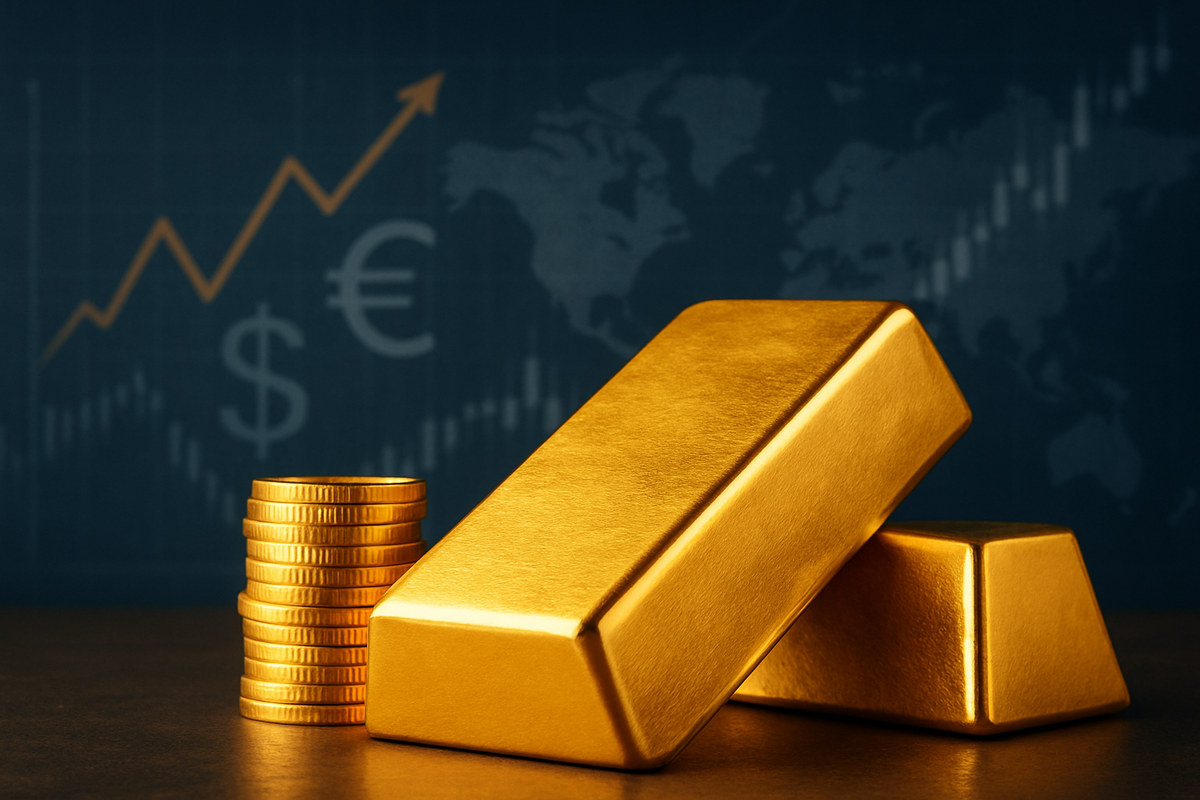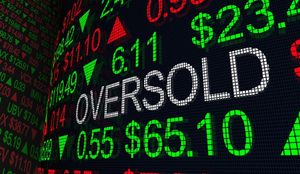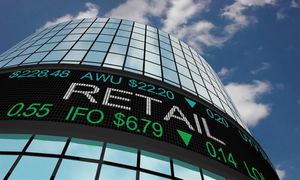
Gold prices have embarked on a historic rally throughout 2025, reaching new highs and cementing its status as a premier safe-haven asset. As of November 25, 2025, the yellow metal has appreciated by an astounding 54% to 60% year-to-date, marking one of its strongest annual performances in over four decades. This remarkable surge is sending ripples across global financial markets, with immediate implications for investors seeking stability amidst a turbulent economic and geopolitical landscape. The rally reflects a profound shift in market sentiment, driven by a confluence of factors that are reshaping traditional asset allocations and challenging conventional economic wisdom.
The immediate implications for the market include heightened volatility, with gold prices delicately balancing between its safe-haven appeal and the ever-present influence of interest rate expectations. Technically, gold is decisively bullish, leading many analysts to view price dips as strategic buying opportunities within an optimistic long-term outlook. This unprecedented rally also suggests a departure from the traditional inverse correlation between gold and tech stocks, indicating a broader re-evaluation of asset class relationships. For investors, gold continues to serve as a crucial hedge against economic and geopolitical uncertainties, with its long-term structural uptrend expected to remain solid.
The Golden Surge: Unpacking the Forces Behind Gold's Historic Rally
The current gold rally is a testament to a complex interplay of global forces, pushing the precious metal to unprecedented levels. By November 25, 2025, gold had not only breached the $4,000 per ounce mark but also touched an all-time high of approximately $4,381.58 per ounce in October, before stabilizing around the $4,100-$4,175 range. This surge, representing a 50-60% year-to-date increase, is its strongest annual gain since 1979, driven by escalating geopolitical tensions, aggressive central bank accumulation, persistent inflation fears, and a weakening US dollar.
A significant catalyst has been the growing anticipation of US Federal Reserve interest rate cuts. Weaker-than-expected US economic data, coupled with dovish comments from Fed officials, has led analysts to assign a high probability (around 81%) to a 25-basis-point cut in December. Lower interest rates inherently reduce the opportunity cost of holding non-yielding assets like gold, making it more attractive. Concurrently, persistent global economic uncertainty and heightened geopolitical risks, including the ongoing Ukraine conflict, Middle East instability, and renewed US-China trade tensions, have significantly bolstered gold's appeal as a safe haven. The global trend of de-dollarization, accelerated by the seizure of Russia's central bank assets in 2022, has also spurred central banks worldwide to aggressively increase their gold holdings, with institutions like the People's Bank of China and the National Bank of Poland being prominent buyers. This consistent central bank demand, accounting for approximately 25% of total global gold demand during peak periods, provides a robust demand floor for prices.
The timeline of 2025 highlights gold's relentless climb: beginning the year around $2,860 per ounce, it surpassed $3,000 in March amidst new US tariffs, peaked at $3,500 in April due to unpredictable US trade policy and Middle East tensions, and decisively broke above $4,000 in October, marking its 50th new record high of the year. While a brief correction occurred in mid-November, with prices retreating from their peak, the underlying bullish sentiment quickly returned, reinforced by strengthening expectations for a December Fed rate cut. Key players in this rally include global central banks, who are diversifying their reserves; institutional and retail investors, who have poured funds into gold ETFs; and geopolitical actors whose actions continue to fuel uncertainty. The initial market reaction has been overwhelmingly bullish, leading to a renaissance in the gold mining sector, with mining equities often outperforming physical gold, and major financial institutions revising their price targets upwards, with some forecasting prices to reach $5,000 per ounce by 2026 or 2027.
Winners and Losers: Corporate Impact of Soaring Gold Prices
The sustained rally in gold prices, with spot gold at approximately $4,111.86 per ounce as of November 25, 2025, has created a distinct divide among public companies: those poised for significant gains and those facing considerable headwinds. Companies directly involved in gold extraction or financing gold miners are reaping substantial benefits, while industries reliant on gold as a raw material are grappling with increased costs.
Companies That Stand to Win:
Gold mining companies are the most direct beneficiaries. Their revenue streams are fundamentally tied to the price of gold, and with prices soaring, their profit margins are expanding significantly. Higher gold prices allow them to sell each ounce at a greater profit, leading to increased revenue, improved free cash flow, and the potential for debt reduction, expansion projects, or enhanced shareholder returns. Major players like Newmont (NYSE: NEM, TSX: NGT), Barrick Gold (NYSE: GOLD, TSX: ABX), and Agnico Eagle (NYSE: AEM) are experiencing boosted top lines and profitability. Smaller miners, such as RUA GOLD Inc. (TSXV: RUA) and Collective Mining Ltd. (NYSE-American: CNL), are also seeing their share prices rally, reflecting the increased attractiveness of gold assets.
Precious metals royalty and streaming companies also stand to win considerably. These companies, including Franco-Nevada (NYSE: FNV), Wheaton Precious Metals (NYSE: WPM), and Royal Gold (RGLD), provide upfront financing to miners in exchange for a percentage of future production or revenue. Their business model boasts low operational costs and high-profit margins, as they benefit from rising gold prices without the direct operational risks and capital expenditures of mining. As gold prices climb, the value of their royalties and the profit margins from their streamed gold widen, leading to robust cash flows and strong financial performance.
Companies That Stand to Lose (or Face Headwinds):
Conversely, industries that use gold as a primary raw material are facing increased operational costs. Jewelry manufacturers and retailers are particularly vulnerable. Gold is a fundamental input for their products, and a sustained rally directly increases their material costs. This often translates into higher retail prices for gold jewelry, which can dampen consumer demand, especially in price-sensitive markets. Consumers might opt for less expensive alternatives or choose to repair existing pieces rather than purchase new ones. While luxury brands like Cartier and Tiffany & Co. might better absorb some costs, their margins will still be under pressure.
Electronics and technology companies also utilize gold for its superior conductivity and corrosion resistance in various components, including connectors, circuit boards, and semiconductors. Higher gold prices mean increased raw material costs, directly impacting their manufacturing expenses and potentially squeezing profit margins. This could necessitate price adjustments for their end products, affecting their competitiveness, and may also spur greater investment in R&D to find more cost-efficient uses of gold or alternative materials to mitigate price volatility.
A New Era for Gold: Broader Implications and Historical Context
The current gold rally is more than just a market anomaly; it signifies a profound recalibration of global financial dynamics and investor sentiment. With gold prices soaring past previous records, driven by geopolitical instability, economic uncertainties, and aggressive central bank buying, its wider significance extends across various sectors and hints at fundamental shifts in the international financial architecture. This rally suggests that gold is increasingly viewed not merely as an inflation hedge, but as a crucial safeguard against geopolitical fragmentation, sanctions risk, and fundamental doubts about monetary and fiscal credibility.
The rally fits into broader industry trends by highlighting a growing distrust in traditional fiat currencies and government bonds, particularly amidst unprecedented levels of global debt and expansive central bank balance sheets. The aggressive accumulation of gold by central banks, especially in emerging markets, underscores a strategic move towards de-dollarization, aiming to diversify reserves away from the US dollar and enhance financial security. This trend could have long-term implications for the dollar's dominance in global finance. Furthermore, gold's outperformance compared to other traditional safe-haven assets like US Treasury Bonds and even cryptocurrencies, during periods of heightened geopolitical tensions, questions the effectiveness of traditional portfolio diversification strategies.
Potential ripple effects include intensified competition for other safe-haven assets and a re-evaluation of asset allocation models. For the gold mining sector, the rally has ushered in an era of extraordinary profit expansion, making mid-cap producers attractive acquisition targets and fueling exploration efforts. However, the industry also faces challenges such as rising energy costs and stricter environmental regulations, which could constrain supply growth. On the policy front, the Federal Reserve's dovish pivot and potential interest rate cuts are under intense scrutiny, as their actions directly impact gold's appeal. The rally also underscores the fiscal credibility challenges faced by governments, with growing debt levels in major economies prompting further gold accumulation by both central banks and private investors.
Historically, the current rally draws parallels to the stagflationary period of the 1970s, when gold famously soared after the end of the Bretton Woods system and amid high inflation, reaching an inflation-adjusted high that the current rally has now surpassed. Similar surges were observed during the 2008 financial crisis and the COVID-19 pandemic in 2020. However, the current rally is distinctive, driven not only by inflation fears but also by geopolitical fragmentation and fundamental doubts about global monetary and fiscal credibility. Experts like J.P. Morgan Research view gold as an "optimal hedge for the unique combination of stagflation, recession, debasement and U.S. policy risks facing markets in 2025 and 2026," suggesting a prolonged period of relevance for the precious metal.
Navigating the Future: What's Next for the Gold Market
The gold market, currently in a historic rally, is poised for a dynamic future, with both short-term volatility and long-term bullish prospects. As of November 25, 2025, with prices consistently above $4,000 per ounce, the trajectory of gold will largely hinge on the interplay of monetary policy, geopolitical developments, and global economic health.
In the short term (next 3-6 months), the gold market is likely to experience continued volatility, with potential minor pullbacks as the market absorbs the extended rally. Gold prices are expected to trade within a volatile range, influenced heavily by any shifts in the probability and timing of a December Federal Reserve rate cut. A confirmed dovish stance from the Fed could provide further upside, while any hawkish surprises or stronger-than-expected US economic data could trigger corrections. Investors should anticipate a delicate balance between gold's safe-haven appeal and interest rate expectations, making market timing and risk management crucial.
Looking into the long term (next 6-18 months and beyond), the outlook for gold remains broadly bullish. Major financial institutions like Bank of America, Goldman Sachs, and Morgan Stanley forecast sustained strength, with price targets ranging from $4,400 to $5,000 per ounce by mid-2026. This optimism is underpinned by the expectation of continued central bank purchases for reserve diversification, a weakening US dollar, and persistent geopolitical and economic uncertainties. Gold's role as an inflation hedge and a vehicle for de-dollarization is expected to remain significant, providing a structural foundation for its price. Strategic pivots will be essential for various stakeholders: investors should view gold as a critical diversification tool and a hedge against systemic risks, considering accumulation opportunities during pullbacks and exploring gold-related financial instruments. Central banks are expected to continue their reserve diversification, while gold mining companies will focus on sustainable practices, technological integration, and exploration to secure future reserves.
Emerging market opportunities are also significant, with countries like China and India driving substantial consumer and investment demand due to expanding middle classes and cultural ties to gold. Gold-producing emerging economies are experiencing economic windfalls, and the metal's use in modern infrastructure and technology manufacturing offers new avenues for growth. However, challenges such as policy normalization risks, geopolitical instability, and supply chain disruptions could impact these markets. Potential scenarios range from a continued bullish rally, driven by sustained central bank demand, further Fed rate cuts, and persistent global inflation, potentially pushing gold to $5,500-$6,000 in an aggressive easing scenario. A sideways trading/moderate appreciation scenario could occur if macroeconomic forecasts hold true with improving inflation but lingering uncertainties. A corrective/bearish scenario remains a downside risk if the Fed makes a hawkish pivot, global conflicts resolve, or the economic outlook significantly improves, diminishing gold's safe-haven appeal.
Gold's Enduring Luster: A Comprehensive Market Wrap-Up
The current gold rally, a defining financial event of 2025, underscores the metal's enduring significance in an increasingly volatile world. With prices climbing to unprecedented highs, gaining over 40% year-to-date and on track for its third consecutive year of double-digit returns, gold has firmly re-established itself as a critical asset for investors and central banks alike.
Key Takeaways from this historic run include the profound influence of anticipated US Federal Reserve interest rate cuts, which reduce the opportunity cost of holding non-yielding assets. This monetary policy expectation is amplified by persistent global geopolitical instability—from the Middle East to Ukraine—and pervasive economic uncertainties, including inflation worries and elevated government debt. Crucially, the relentless accumulation of gold by central banks, particularly from emerging markets, signifies a structural shift towards reserve diversification and away from a singular reliance on fiat currencies. This confluence of factors has solidified gold's role as both a safe-haven asset and a vital tool for portfolio diversification.
Moving forward, the market is assessed to remain largely bullish, with major financial institutions projecting continued price appreciation into 2026, potentially reaching targets between $4,400 and $5,000 per ounce. While the pace of the rally might moderate, the underlying drivers—lower interest rates, persistent inflation, geopolitical risks, and sustained central bank demand—are expected to provide a robust floor for gold prices. However, investors should also be prepared for tactical pullbacks and short-term volatility, as speculative positions unwind and the market reacts to evolving economic data.
Final thoughts on the significance and lasting impact of this rally point to a fundamental reassessment of gold's role in the global financial system. It reflects a deeper, perhaps systemic, loss of confidence in traditional policymakers, currencies, and the stability of the financial system itself. This elevated price level is not merely a temporary surge but a potential harbinger of a new era where gold is considered a core, strategic asset for risk hedging and wealth preservation. The sustained demand from central banks, in particular, suggests a long-term shift away from dollar dominance and towards a more diversified international reserve system.
What investors should watch for in the coming months includes primarily the US Federal Reserve's monetary policy decisions, especially regarding interest rate cuts. Any hawkish surprises could temper the rally, while continued dovish signals will likely provide further impetus. Closely monitor incoming US economic data, including inflation readings, retail sales, and labor market reports, as these will heavily influence the Fed's stance. Geopolitical developments, particularly any escalation or de-escalation of conflicts and trade tensions, will continue to impact gold's safe-haven appeal. Finally, keep a close eye on central bank buying trends; while robust, any moderation could affect market sentiment. Diversification and a vigilant approach to market signals will be paramount for navigating the dynamic gold market effectively.
This content is intended for informational purposes only and is not financial advice







